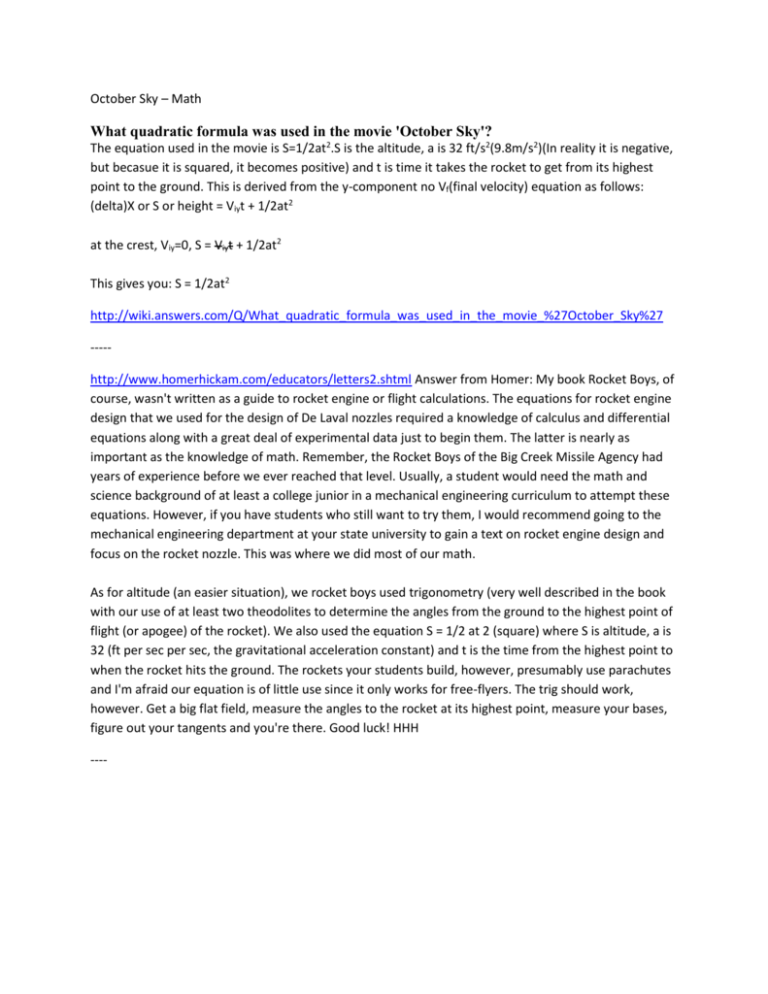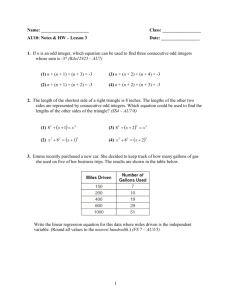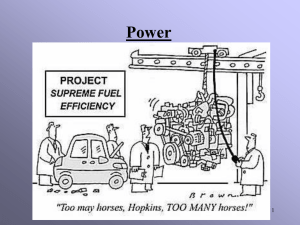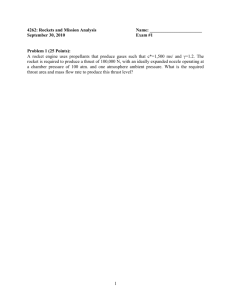OctoberSkyMath
advertisement

October Sky – Math What quadratic formula was used in the movie 'October Sky'? The equation used in the movie is S=1/2at2.S is the altitude, a is 32 ft/s2(9.8m/s2)(In reality it is negative, but becasue it is squared, it becomes positive) and t is time it takes the rocket to get from its highest point to the ground. This is derived from the y-component no Vf(final velocity) equation as follows: (delta)X or S or height = Viyt + 1/2at2 at the crest, Viy=0, S = Viyt + 1/2at2 This gives you: S = 1/2at2 http://wiki.answers.com/Q/What_quadratic_formula_was_used_in_the_movie_%27October_Sky%27 ----http://www.homerhickam.com/educators/letters2.shtml Answer from Homer: My book Rocket Boys, of course, wasn't written as a guide to rocket engine or flight calculations. The equations for rocket engine design that we used for the design of De Laval nozzles required a knowledge of calculus and differential equations along with a great deal of experimental data just to begin them. The latter is nearly as important as the knowledge of math. Remember, the Rocket Boys of the Big Creek Missile Agency had years of experience before we ever reached that level. Usually, a student would need the math and science background of at least a college junior in a mechanical engineering curriculum to attempt these equations. However, if you have students who still want to try them, I would recommend going to the mechanical engineering department at your state university to gain a text on rocket engine design and focus on the rocket nozzle. This was where we did most of our math. As for altitude (an easier situation), we rocket boys used trigonometry (very well described in the book with our use of at least two theodolites to determine the angles from the ground to the highest point of flight (or apogee) of the rocket). We also used the equation S = 1/2 at 2 (square) where S is altitude, a is 32 (ft per sec per sec, the gravitational acceleration constant) and t is the time from the highest point to when the rocket hits the ground. The rockets your students build, however, presumably use parachutes and I'm afraid our equation is of little use since it only works for free-flyers. The trig should work, however. Get a big flat field, measure the angles to the rocket at its highest point, measure your bases, figure out your tangents and you're there. Good luck! HHH ----











